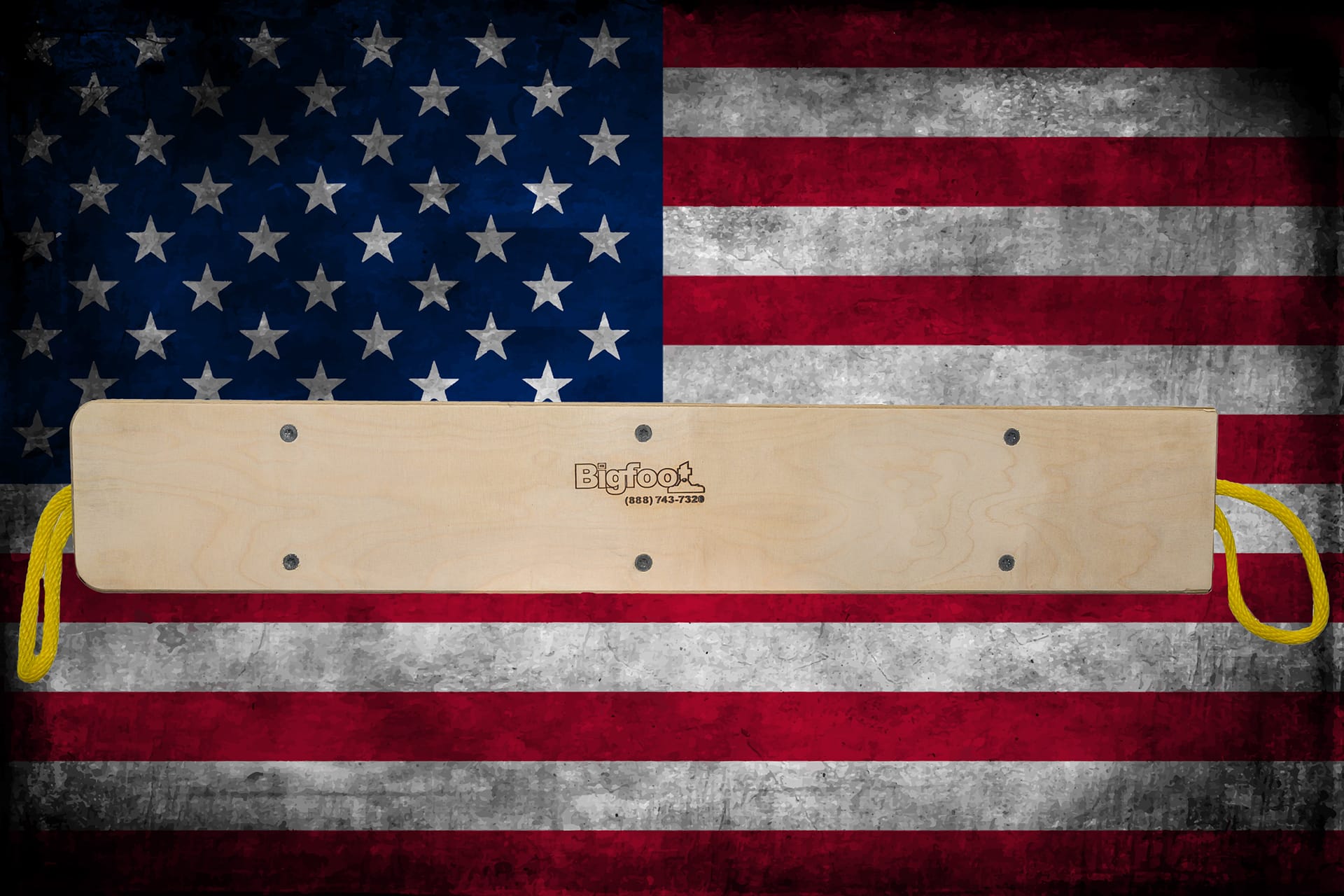The Proper Use and Application of Cribbing for Safe Equipment Stabilization
August 25, 2025
General Information, Ground Conditions, News

At Bigfoot, we manufacture high-quality outrigger pads and cribbing solutions designed to provide maximum stability and safety for heavy equipment. Cribbing is an essential tool in load stabilization, offering additional height, weight distribution, and reinforcement when standard outrigger pads alone are not sufficient. Understanding the proper use and application of cribbing is crucial to ensuring job site safety and equipment efficiency.
What is Cribbing?
Cribbing consists of blocks or layers of material—typically wood, composite, or engineered plastic—stacked to create a stable base for equipment. It is used to provide additional height, distribute weight over a larger area, and prevent sinking or shifting when operating heavy machinery such as cranes, aerial lifts, and utility trucks.
When to Use Cribbing
Cribbing should be used in situations where:
- the ground conditions are soft, uneven, or unable to support heavy loads without additional stabilization.
- equipment requires extra height to achieve proper leveling or clearance.
- outriggers alone do not provide a sufficient foundation for safe operation.
- load distribution needs to be improved to prevent excessive ground pressure.
Proper Cribbing Techniques
Cribbing for safe equipment stabilization is ensured by following these best practices:
- Choose the Right Material
- Wood Cribbing – Traditionally used but susceptible to moisture absorption, rot, and splitting over time.
- Composite Cribbing – Engineered for superior strength, durability, and resistance to weather and chemicals.
- Engineered Plastic Cribbing – Offers a high load-bearing capacity and longevity without the risks associated with wood degradation.
- Stack Cribbing Correctly
- Always use a cribbing pyramid or interlocking pattern for added strength and stability.
- Avoid stacking blocks in a single column; instead, alternate layers in a perpendicular fashion to distribute weight evenly.
- Ensure the cribbing stack remains level and firmly positioned under the equipment load.
- Determine Load Capacity
- Always check the load rating of the cribbing material to ensure it can support the equipment’s weight.
- Distribute the load evenly across the entire cribbing structure to prevent tipping or shifting.
- Conduct Regular Inspections
- Before each use, inspect cribbing blocks for cracks, warping, or other signs of wear.
- Avoid using damaged or compromised cribbing, as it can lead to instability and potential equipment failure.
- Use in Combination with Outrigger Pads
- For optimal stability, use cribbing in conjunction with properly sized outrigger pads to enhance load distribution and prevent ground penetration.
- Place outrigger pads on top of cribbing stacks to create a secure and level foundation.
Common Mistakes to Avoid
Several common mistakes can compromise the integrity of the cribbing and put both personnel and equipment at risk. Watch out for these common errors:
- Using makeshift cribbing such as scrap wood or untested materials, which may lack the necessary strength and reliability.
- Improper stacking techniques that result in unstable or uneven cribbing structures.
- Overloading cribbing beyond its rated capacity, leading to potential failure under heavy loads.
- Ignoring ground conditions, which can compromise the effectiveness of cribbing if not properly accounted for.
Conclusion
Cribbing plays a vital role in equipment stabilization, ensuring safety and operational efficiency in challenging ground conditions. By selecting the right material, using proper stacking techniques, and regularly inspecting cribbing for wear and damage, operators can enhance workplace safety and prevent accidents. At Bigfoot, we manufacture industry-leading cribbing solutions designed to support heavy loads and maintain stability in even the most demanding environments.
For expert advice on choosing the best cribbing and outrigger pad solutions, contact Bigfoot today!
References

